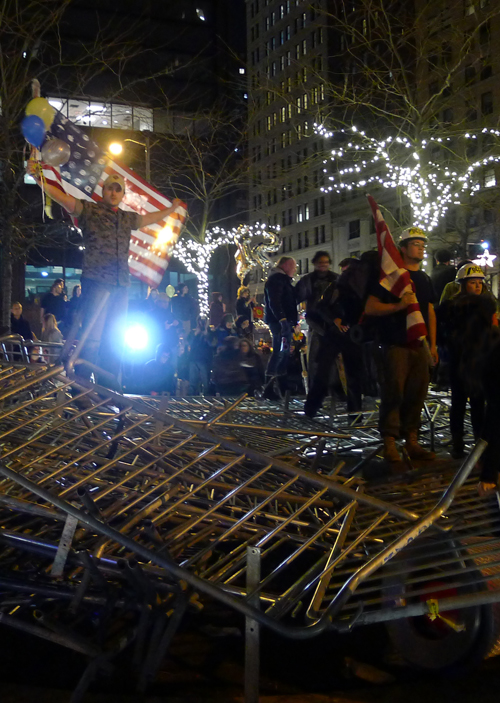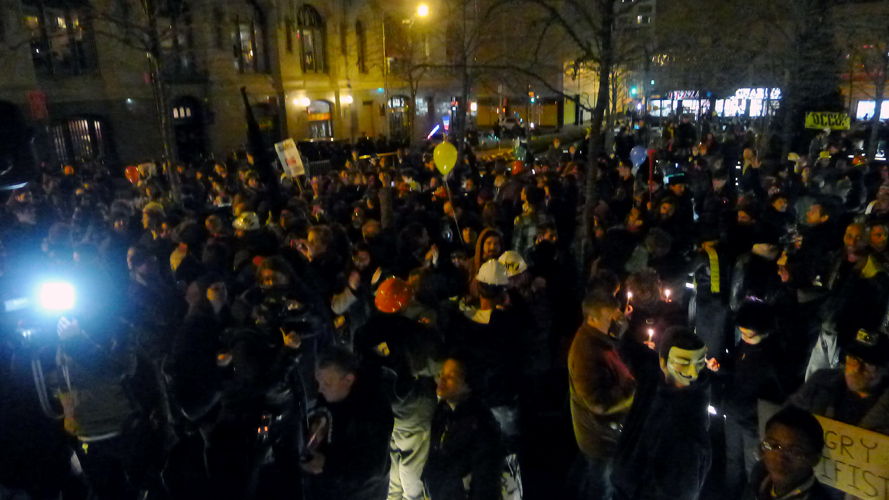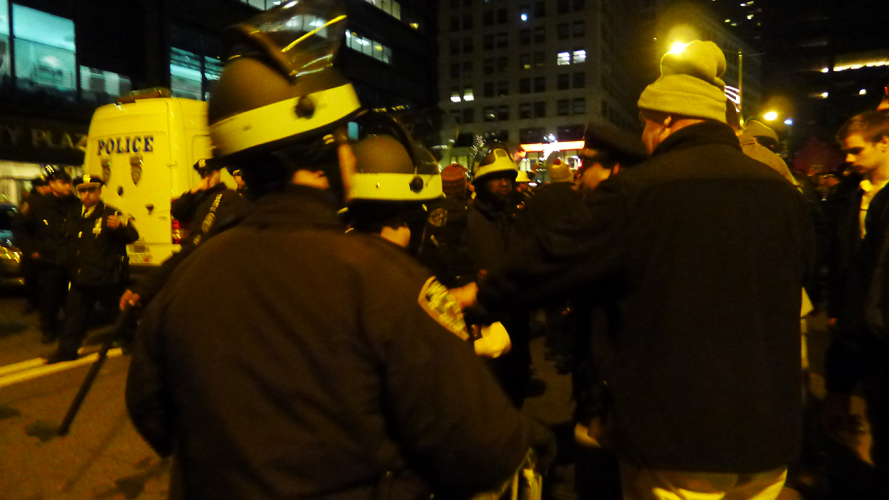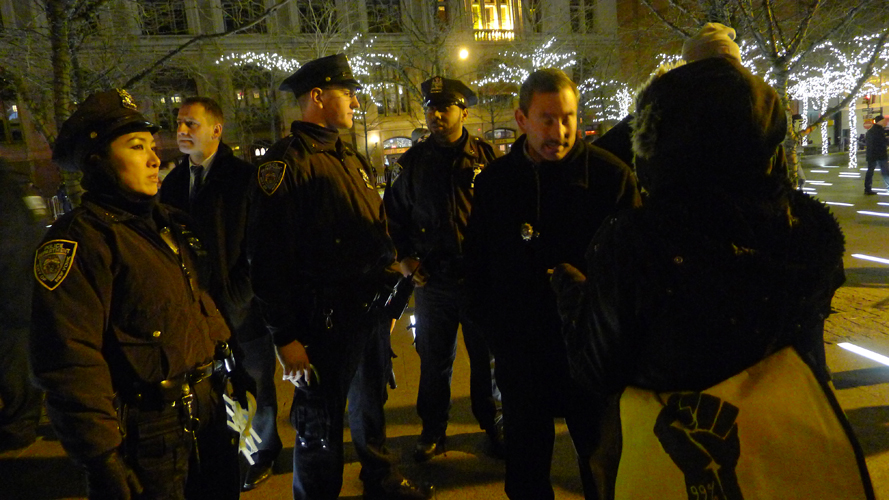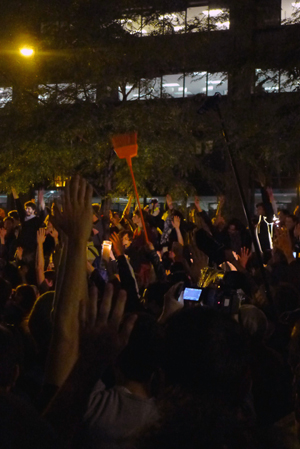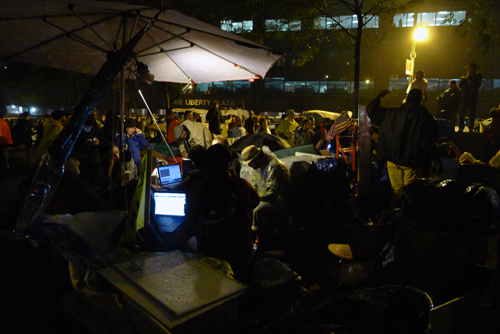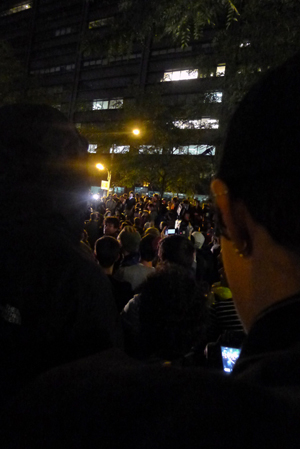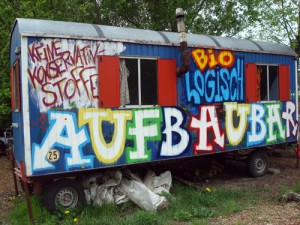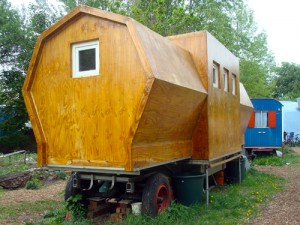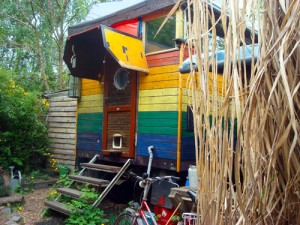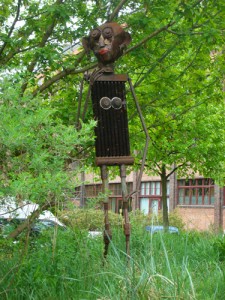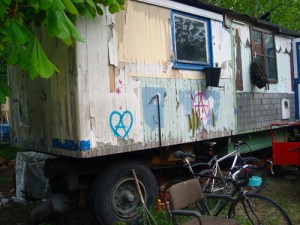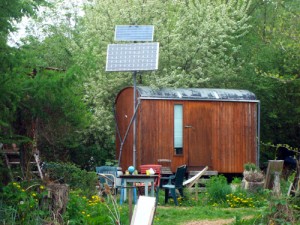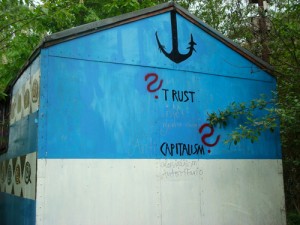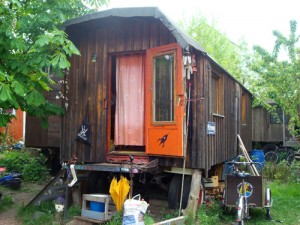Posts Tagged ‘community’
 This Is What 2012 Looks Like
This Is What 2012 Looks Like
by Ayesha Adamo
This is what 2012 looks like, in case you were wondering. I spent my New Year’s Eve in Liberty Square here in New York, ready to occupy the New Year. If you were there, then you know. If you weren’t, then let me tell you that as I watched the team from Direct Action swoop in and pull barricades down, winning a tug-of-war against the cops who were outnumbered for once, thanks to the festivities in Times Square, I knew that this was the best New Year’s Eve of my life.
I knew it even more so as I, with my fellow occupiers, climbed the great pile of barricades that the people had tossed into the middle of the park. We stood on top, looked out over the sea of faces that had gathered, and shook the ground. And you could just tell—the myths are finally here: this is what 2012 was always meant to be. This is what I’ve been waiting for all my life.
Later the NYPD battalions in riot gear would descend upon the park, kicking out the few of us who decided not to go on the march to the East Village, but it was already too late: the ground had already been shaken and the barricades had already toppled. The symbol, the ritual, had already been completed, set into motion…the magick button had been pressed and no matter how many arrests were made that night, nothing could change it. Standing outside the 9th Precinct at 4 in the morning to cheer our warriors as they exited the paddy wagon, and get an idea of names to pass on to the National Lawyers Guild, the night was winding down, but with the knowledge that nothing was over. Far far from it. Viva la revolución! Viva 2012!
 Sweeping the Park, Sweeping the Nation
Sweeping the Park, Sweeping the Nation
By Ayesha Adamo
Everyone has heard about the occupation. Everyone has seen the Youtube videos of police arrests and celebrity interviews. But on the eve of eviction, in the sometimes-pouring rain and thunder, in the middle of the night…there is another story to be told.
This is what you don’t get to see or hear as much about: the simple beauty of the exhausted, damp and nameless pushing brooms in a slow moving swarm from one end of the park to the other, here in the evening’s damp haze made shimmering by the remaining lights from the buildings above. This is when the celebrities and their spotlights and agendas are nowhere to be found (except that we were sweeping with none other than Santa Claus himself, all dressed in red). During the quiet moments, everyone’s a leader and no one’s a leader.
Part of me was thinking with concern about the runoff contamination from the cleaning agents in these suds, as we were mopping along a stream of soap bubbles, leaves, bits of salami and abandoned hair elastics, but it also seemed to be a necessary evil. It’s likely that the cleaning effort had a big impact on the city’s decision not to evict the protesters.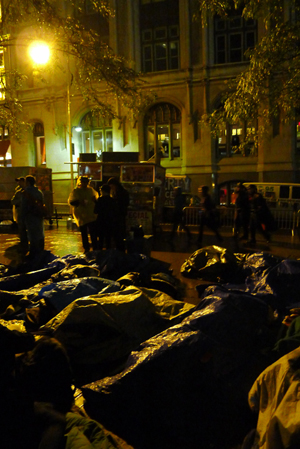
Throughout the night and into the morning, truckers would drive past and honk their horns loudly in solidarity, which was always met with cheers, no matter the hour. We slept on the plain ground covered with only a plastic bag to keep dry because the plan that night was to minimize the amount of sleeping bags and bedding in the park. As 5am approached, a girl came by giving out dry socks to people. Others passed around Sharpies to write the phone number of the lawyers on their body in case of arrest.
More and more people were showing up at the park, and by 6am, it was a sea of bodies as far as you could see in any direction—so far out that any statement over the people’s mic needed to be repeated in three or four ripples. So many faces, so many lights!—from cell phones, candles, video cameras…But when the breaking news came over the crowd—the news that the cleaning/eviction had been canceled—this enormous group was so unified that the words needed no repetition. From the cheers of joy alone, everybody knew. And everybody knew that they had just experienced something absolutely historic, I dare say absolutely spiritual.
 The Beginning is Here
The Beginning is Here
With a clear blue sky and weather almost warm enough to go topless (and there were some who did), they couldn’t have picked a better day for a protest. On Wednesday 10/5/11, I came down to Occupy with the Columbia University contingent, a truly boisterous group that kept the chanting going non-stop using “the people’s mic” technique, which has proved so helpful in an action where no amplification is allowed (everyone repeats after the central speaker so that the message travels out to rings of people further and further away).
Down at Wall Street, all the groups seemed to melt into one another. There were union groups, student groups, a marching band with four tubas, a kindergarten class holding a banner together and chanting in tiny voices to share and not be greedy…just people of every sort imaginable coming together to express the need for a real change in the way things are now. And there didn’t need to be just one reason to be there because this is the new way of protesting, of understanding. This is the rhizome, like the world wide web, and the links and connections between one thing and another don’t need to make sense in a linear format. They only need to be. Just to be seen by the people in those tall buildings who don’t touch public pavement is a win, and a person would have to be cold-as-dead to look out on a crowd like this and not be moved. When I look around at all these faces—their eyes, hearts, the blood in their veins—I feel like I’ve been waiting for this all my life, and finally…The Beginning is Here.
